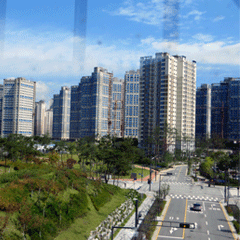[30 October 2014] -- To mark the release of our major study Managing Systems of Secondary Cities and World Cities Day on 31 October, we have put together a list of the top reasons why we must pay more attention to the development of secondary cities.
-- They are the fastest growing urban areas. Some 75 per cent of the world’s population live in urban settlements of fewer than 500,000 people. This number will only increase; secondary cities, especially in African countries, are expected to double or even triple in population over the next 15 to 25 years. This means large infrastructure and service shortfalls, few opportunities for economic growth, and rising urban poverty.
-- There are a lot of them, especially in developing countries. There are more than 4,000 cities in the world with populations exceeding 100,000. Around 2,400 of these have populations of fewer than 750,000 and more than 60 per cent are located in developing regions and countries. Many are struggling with the problems of rapid urbanisation, poverty and job creation.
-- Many are poor and struggling. The rapid urbanisation of many secondary cities has come at considerable environmental and social cost. Many secondary cities are poor and overcome by the pressures of development resulting from urbanisation. They often have weak or dysfunctional governance systems; urban development takes place uncontrolled without any consideration of plans, there is little urban infrastructure and provided services, and little attention is given to building and development control. In many cities, slums are growing unchecked.
-- They are the economic backbone of the world's largest cities. Secondary cities produce less than 40 per cent of world Gross Domestic Product (GDP)but provide most of the resources needed to support the operations and development of the world’s 600 largest cities, which produce 60 per cent of the world GDP.
-- They are governance and economic centres. Most secondary cities are subnational capital cities responsible for secondary level of government; a key manufacturing, primary or resource-industry centre; or a global centre of cultural, natural or advanced-industry significance. They can also be major satellite cities forming a cluster of cities in a metro-region city.
-- They can really boost a national economy. Countries with a strong system of secondary cities – that are not dominated by a single megacity – tend to have lower levels of regional development disparities, higher levels of national productivity, and greater income per capita. An efficient secondary systems of cities could double or triple the GDP of many poor cities and rural regions.
-- They come in all shapes and sizes. A secondary city will likely have a population or economy ranging in size between 10 per cent and 50 per cent of a nation’s largest city. In China, some secondary cities have populations of over five million; in Ethiopia, they have fewer than 200,000. Function and role – rather than population size – are increasingly defining a secondary city’s status within the global system of cities.
-- They are often eclipsed by primary cities. Globally, there is a growing gap in levels of socioeconomic development disparities occurring between secondary and primary cities that has a significant consequence on their capacity to develop and compete for trade and investment.
-- We don't have much information about them. Most reports focus on the study of macro trends or the world’s biggest, most competitive, cities. There is much less information available on the economy, land, finance, infrastructure and governance of secondary cities. This situation is severely affecting their capacity to plan and manage urban development and promote employment and economic growth.
-- Few have the capacity for strategic planning. Much urban planning in secondary cities is geared towards master plans and structure planning. Very few have adopted integrated strategic planning, linking spatial plans to the development of infrastructure, land development, public finance, and long-term financial plans – a vital part of managing city development effectively, ensuring that resources are not wasted, and helping urban systems become much more efficient. Many cities can benefit from the excellent knowledge tools produced by organisations such as UN-Habitat, the Cities Alliance, Inter-American Development Bank and the Asian Development Bank.
Source: Managing Systems of Secondary Cities

Secondary cities vary considerably in size. In China, some have populations of over five million, while in Ethiopia they have fewer than 200,000. Above: Sejong City, South Korea. Photo: Susanna Henderson/Cities Alliance
The Cities Alliance actively supports secondary cities. We commissioned Managing Systems of Secondary Cities, helping fill a major knowledge gap. We also integrated secondary cities development into our Country Programme model, and are actively promoting a system of cities approach in our operations.
Related Items




